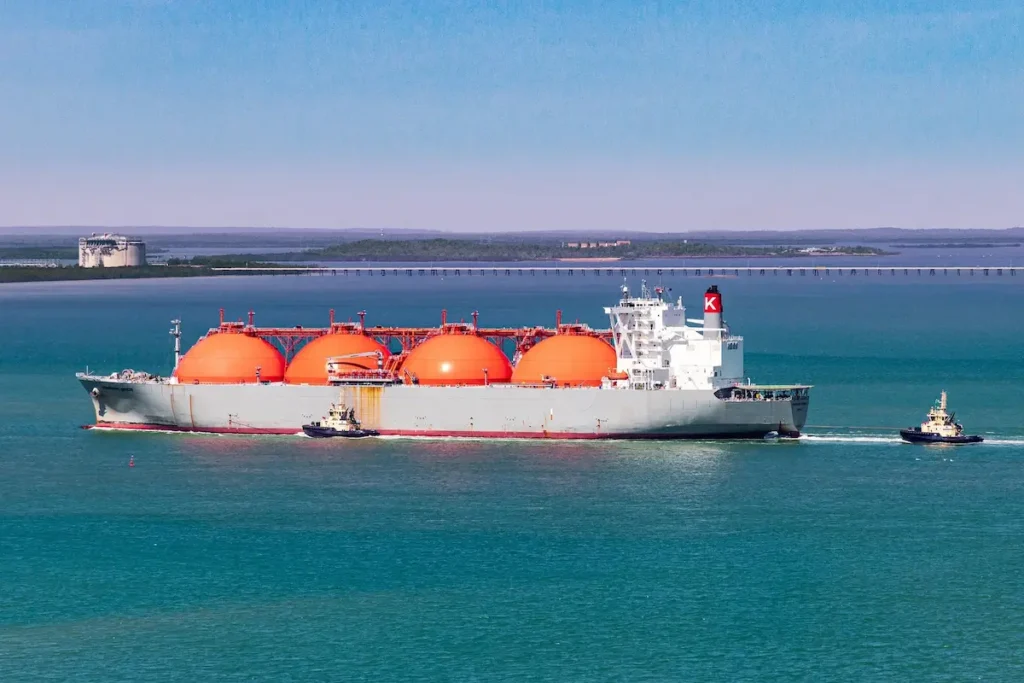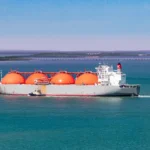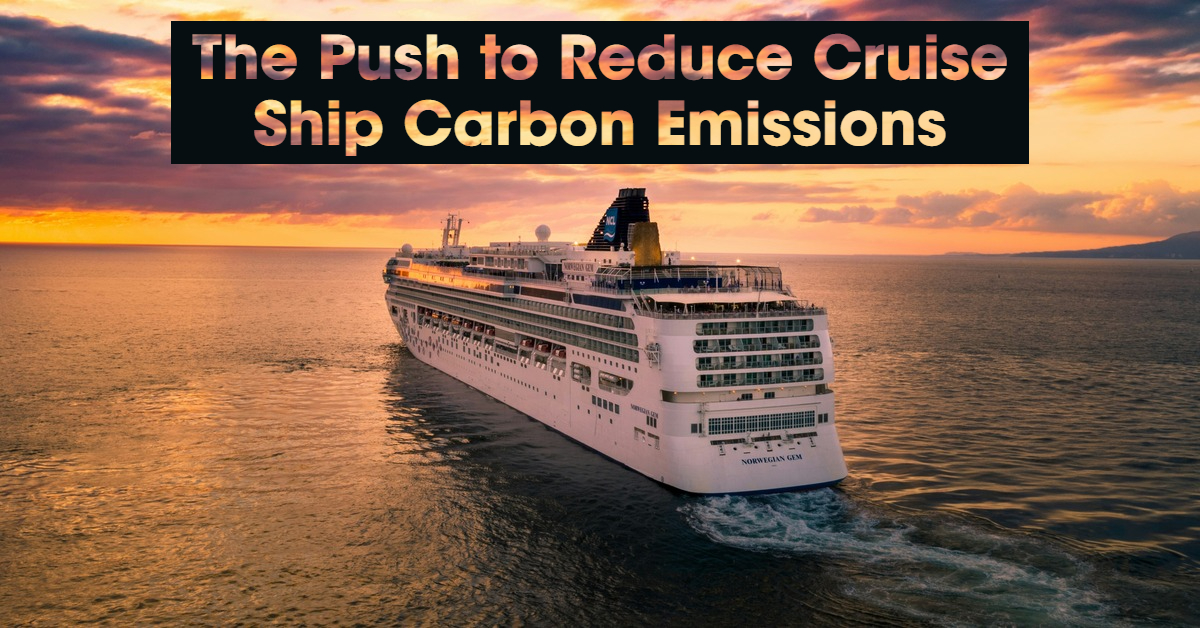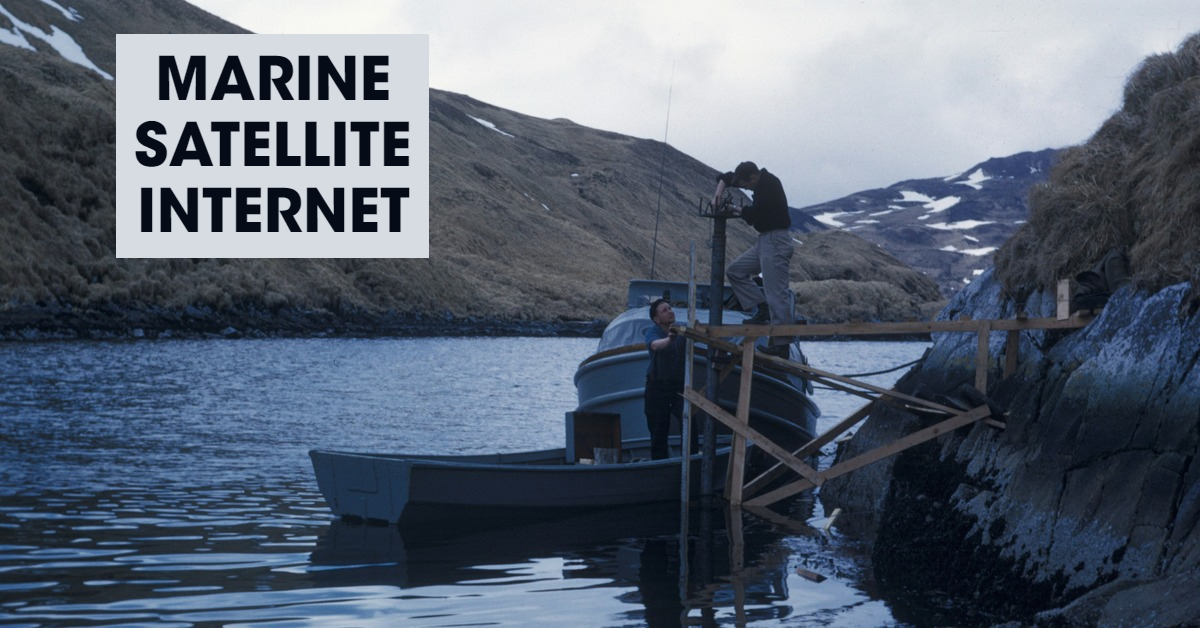Liquified Natural Gas (LNG) has become an increasingly important source of energy in recent years due to its clean burning properties and domestic availability. However, transporting LNG safely and efficiently is a complex task that requires specialized ships known as LNG carriers.
LNG carriers play a critical role in the transportation of natural gas from production fields to consumption centers. The safe and efficient transportation of LNG is essential to meeting the growing energy needs of countries around the world.

The Types of LNG Carriers
There are several types of LNG carriers by construction, each with its own unique features and benefits. The main types of LNG carriers by construction include:
- Membrane Type: These carriers have a membrane-type cargo containment system, which is made up of several layers of thin metal and insulating materials. The membrane is designed to contain the cargo in a liquid state and prevent leaks. Membrane-type LNG carriers are considered to be the safest and most efficient type of LNG carrier, as the membrane provides excellent insulation and is less prone to leaks and spills.
- Moss Type: These carriers have a Moss-type cargo containment system, which is made up of spherical tanks that are supported by an internal framework. The tanks are designed to contain the cargo in a liquid state and prevent leaks. Moss-type LNG carriers are considered to be less safe and less efficient than membrane-type carriers, but they have the advantage of being able to carry more cargo.
- Self-Supporting Prismatic Type: These carriers have a self-supporting prismatic cargo containment system, which is made up of several large, prism-shaped tanks that are supported by the ship’s hull. The tanks are designed to contain the cargo in a liquid state and prevent leaks. Self-supporting prismatic-type LNG carriers are considered to be less safe and less efficient than membrane-type carriers, but they have the advantage of being able to carry more cargo.
- Semi-Membrane Type: These carriers have a semi-membrane cargo containment system, which is a combination of membrane and self-supporting prismatic type.
Each of the above types of LNG carriers has its own set of benefits and limitations, and the choice of which type to use will depend on the specific needs and requirements of the carrier.
Currently, the most popular type of LNG carrier by construction is the membrane type. This is due to the fact that membrane-type LNG carriers are considered to be the safest and most efficient type of LNG carrier, as the membrane provides excellent insulation and is less prone to leaks and spills. They are also considered to be more energy-efficient, as they require less energy to maintain the cargo at its desired temperature.
Furthermore, in recent years, membrane-type LNG carriers are the most often built, as they are considered to be the most advanced technology in LNG carrier construction. This is because they offer several advantages over other types of LNG carriers, including increased safety and efficiency, lower maintenance costs, and greater cargo capacity.
Additionally, the semi-membrane type of LNG carrier is also gaining popularity as they offer the advantage of the membrane type and also have larger cargo capacity compared to the membrane type.
The Sizes of LNG Carriers
LNG carriers come in a variety of sizes, each designed to meet the specific needs of the market. The most common sizes are:
- Small-Scale LNG Carriers: These ships are typically used for transporting LNG to smaller terminals or for short-haul routes. They have a capacity of up to 20,000 cubic meters.
- Mid-Scale LNG Carriers: These ships are used for transporting LNG to medium-sized terminals or for medium-haul routes. They have a capacity of 20,000 to 40,000 cubic meters.
- Large-Scale LNG Carriers: These ships are used for transporting LNG to larger terminals or for long-haul routes. They have a capacity of over 40,000 cubic meters.
Currently, the most popular are Large-Scale LNG carriers. 91,6% of the world’s LNG tankers or 99% of the total capacity of the world’s LNG fleet are LNG tankers over 100,000 cubic meters.
Design and Safety Measures of LNG Carriers
LNG carriers are equipped with multiple insulated tanks that are capable of maintaining the temperature of the LNG at -162 degrees Celsius. The tanks are constructed from materials such as stainless steel and aluminum to withstand extremely low temperatures and high pressures. LNG carriers are also equipped with a double-hull structure which provides an additional layer of protection against leaks or breaches, ensuring the safety of the ship and its crew, and minimizing the potential impact on the environment.
In addition to the double-hull structure, LNG carriers are also equipped with a cargo handling system which includes pumps, compressors, and vaporizers that are used to transfer the LNG from the ship to the receiving terminal. The cargo handling system must be able to operate safely and reliably in harsh weather conditions and at extremely low temperatures.
LNG carriers also have advanced safety features such as the use of an “inert gas” system which uses inert gas, such as nitrogen, to displace any oxygen in the tanks and surrounding areas, eliminating the risk of explosions caused by the release of flammable gas. LNG carriers also have advanced fire-fighting systems, including foam and water spray systems that can quickly extinguish any fires that may occur on board the ship. The crew is also trained to handle emergency situations and conduct evacuation drills.
The Future Importance of LNG Transportation
As the demand for LNG continues to grow, so too will the need for efficient and safe methods of transportation. LNG carriers are at the forefront of this movement and will play a vital role in meeting the energy needs of countries around the world. In the future, we can expect to see the development of even larger LNG carriers that can transport even more LNG, as well as new technologies that will further improve the safety and efficiency of LNG transportation.
LNG carriers play a critical role in the transportation of natural gas from production fields to consumption centers. The safe and efficient transportation of LNG is essential to meeting the growing energy needs of countries around the world. With the increasing demand for natural gas as a cleaner source of energy, LNG carriers are becoming more important than ever before.
The Cost and Financing of LNG Carriers
The cost of building and operating LNG carriers can be quite high, with large-scale LNG carriers costing hundreds of millions of dollars. These costs include not only the initial construction of the ship but also the ongoing expenses associated with maintaining and upgrading the ship, as well as crew costs.
The cost of newbuilding LNG carriers is at a record $300 to $320 million per vessel, gaining 30% in value during the year 2022. Construction of the LNG tanker takes 2,5 – 3 years and only a few shipyards are capable of completing this type of ship. The order book of LNG carriers counts 54 newbuilding to be delivered in 2023, 83 in 2024, and a record 102 ships to be launched in 2025.
Over 50 contracts are inked for the construction of LNG carriers with delivery in 2026 or later. The leading shipyards are Hudong Zhonghua, Hyundai, Hyundai Mipo, and Hudong Zhonghui each holding contracts over 70 LNG carried in early 2023.
There are various ways to finance the construction and operation of LNG carriers. Some shipowners may choose to self-finance their vessels, while others may seek funding from banks or other financial institutions. Additionally, many shipowners enter into long-term charter agreements with LNG producers or buyers, which provides a steady stream of revenue to help finance the ship’s operation. We have made a market study of over 700 LNG tankers, summarizing which we made a list of the top 10 LNG carrier operators.
The Market and Demand for LNG Carriers
The market for LNG carriers is closely tied to the demand for natural gas. As countries around the world look to natural gas as a cleaner source of energy, the demand for LNG carriers is expected to continue to grow.
The Asia-Pacific region is currently the largest market for LNG transportation, with China, Japan, and South Korea being the top importers of LNG. However, the demand for LNG is also increasing in other regions such as Europe and North America. As more and more countries transition to natural gas as a primary source of energy, the demand for LNG carriers will only continue to increase.
In addition to the growing demand for natural gas, the increasing use of LNG as a marine fuel is also expected to drive the market for LNG carriers. As countries aim to reduce their greenhouse gas emissions and comply with stricter environmental regulations, the use of LNG as a marine fuel is becoming more popular. This is expected to lead to an increase in the number of LNG-powered ships and in turn, an increase in the demand for LNG carriers.
The Role of LNG Carriers in Global Trade and Energy Security
LNG carriers play a crucial role in the global trade of natural gas and in ensuring energy security for importing countries. As natural gas is a cleaner and more efficient source of energy compared to other fossil fuels, the demand for LNG is increasing worldwide. LNG carriers enable the transport of natural gas from production centers to consumption centers, ensuring a steady supply of energy to meet the growing demand.
The use of LNG carriers also allows countries to diversify their energy sources, reducing dependence on a single supplier and increasing energy security. Additionally, LNG carriers can reach destinations that pipelines cannot, such as small islands or remote locations, providing access to energy to otherwise inaccessible areas.
The Regulatory and Compliance Requirements for LNG Carriers
The operation of LNG carriers is subject to a wide range of regulatory and compliance requirements to ensure the safety and security of the ship, its crew, and the environment. These requirements are set by international, regional, and national bodies, such as the International Maritime Organization (IMO), the United States Coast Guard (USCG), and the European Union (EU).
LNG carriers must comply with strict safety and environmental regulations, including standards for the design, construction, and operation of the ship. They must also comply with regulations related to the handling and transportation of hazardous materials and have safety management systems in place to ensure the safe and efficient operation of the ship.
There are several major conventions, codes, and regulations that apply to LNG carriers, including:
- International Convention for the Safety of Life at Sea (SOLAS): This convention sets safety standards for ships and includes regulations specific to LNG carriers, such as requirements for cargo containment systems and safety equipment.
- International Code for the Construction and Equipment of Ships Carrying Liquefied Gases in Bulk (IGC Code): This code sets out the design, construction, and equipment requirements for LNG carriers, including the requirement for double-hull construction and the use of inert gas systems.
- International Convention for the Prevention of Pollution from Ships (MARPOL): This convention sets regulations for the prevention of pollution from ships, including regulations specific to LNG carriers, such as requirements for the handling and disposal of cargo residues.
- International Maritime Organization (IMO) Circulars: These circulars provide guidance and recommendations on various aspects of LNG carrier operations, such as safety and environmental protection.
- The Code of Practice for the Safe Loading and Unloading of Bulk Carriers (BLU Code): This code provides guidance on the safe loading and unloading of LNG carriers and other bulk carriers.
- National and Regional Regulations: Some countries and regions have their own regulations that apply to LNG carriers, such as the United States Coast Guard (USCG) and the European Union (EU) regulations.
The Role of LNG Carriers in Global Trade and Energy Security
LNG carriers play a crucial role in the global trade of natural gas and in ensuring energy security for importing countries. As natural gas is a cleaner and more efficient source of energy compared to other fossil fuels, the demand for LNG is increasing worldwide. LNG carriers enable the transport of natural gas from production centers to consumption centers, ensuring a steady supply of energy to meet the growing demand.
The use of LNG carriers also allows countries to diversify their energy sources, reducing dependence on a single supplier and increasing energy security. Additionally, LNG carriers can reach destinations that pipelines cannot, such as small islands or remote locations, providing access to energy in otherwise inaccessible areas.
The Challenges and Opportunities of LNG Transportation in Different Regions and Markets
The transportation of LNG presents both challenges and opportunities in different regions and markets. In some areas, the lack of infrastructure, such as ports and terminals, can make it difficult to transport LNG. Additionally, the cost of building and maintaining LNG carriers can be high, making it challenging for some companies to enter the market.
However, as the demand for natural gas continues to grow, there are also many opportunities for the transportation of LNG. The increasing use of LNG as a marine fuel presents a significant opportunity for the development of LNG-powered ships. Additionally, as more countries look to natural gas as a cleaner source of energy, the demand for LNG transportation is expected to continue to grow, particularly in regions where natural gas is not readily available.
The Comparison of LNG Carriers with Other Forms of Natural Gas Transportation
LNG carriers are just one of the ways that natural gas can be transported. Other forms of natural gas transportation include pipelines and compressed natural gas (CNG).
Pipelines are the most common way of transporting natural gas, as they are relatively inexpensive to build and operate, and can transport large volumes of natural gas over long distances. However, pipelines can be costly to construct and have limited flexibility in terms of the destinations they can reach.
CNG is another form of natural gas transportation, which involves compressing the gas to a fraction of its original volume, allowing it to be transported in specialized tanks. CNG is a cleaner and more efficient form of transportation than other fossil fuels and CNG vehicles are becoming more common in some countries. However, the use of CNG is limited to land transportation and CNG vehicles are not yet widely available.
LNG carriers offer a unique solution for the transportation of natural gas, as they can transport natural gas over long distances, to remote locations, or to locations without pipeline infrastructure.
The Potential for LNG as a Marine Fuel and the Development of LNG-Powered Ships
The use of liquified natural gas (LNG) as a marine fuel is gaining popularity as it is a cleaner and more efficient alternative to traditional marine fuels such as heavy fuel oil and diesel. LNG-powered ships emit less sulfur, particulate matter, and nitrogen oxides, and also emit significantly less CO2. This makes LNG a more environmentally friendly option for ships. The use of LNG as a marine fuel is also in line with the International Maritime Organization’s (IMO) goals of reducing greenhouse gas emissions from ships by at least 50% by 2050.
The development of LNG-powered ships is still in its early stages, but there are already several LNG-powered vessels in operation, including cargo ships, ferries, and cruise ships. The use of LNG as a marine fuel is expected to increase in the future, as more ships are retrofitted or built with LNG propulsion systems. Additionally, the availability of LNG as a marine fuel is increasing, with more and more ports offering LNG bunkering facilities.
However, there are also some challenges to the wider adoption of LNG as a marine fuel. The cost of retrofitting or building LNG-powered ships can be high, and there are also concerns about the safety and infrastructure for handling and storing LNG. Despite these challenges, it is expected that the use of LNG as a marine fuel will continue to increase in the future as technology improves and the infrastructure for LNG bunkering and storage expands.
In addition, there are also some potentials for LNG as a marine fuel such as reducing the dependence on traditional fossil fuels, creating new business opportunities for the LNG industry and shipping companies, and helping to meet environmental regulations and climate change targets.
Moreover, the use of LNG as a marine fuel can also help to improve the air quality in ports, as LNG-powered ships emit fewer pollutants than traditional marine fuels. This is particularly important for ports located in urban areas, where air pollution is a major concern.
Overall, the potential for LNG as a marine fuel is significant, and the development of LNG-powered ships is expected to continue to grow in the future. However, further investment in infrastructure and technology is required to support the wider adoption of LNG as a marine fuel and to help overcome the challenges and barriers to its adoption.
Conclusion
In conclusion, LNG carriers are specialized ships that are designed to transport LNG in a liquid state at extremely low temperatures. They come in two main types (Membrane and Moss) and a variety of sizes, each designed to meet the specific needs of the market. LNG carriers are equipped with multiple insulated tanks, a double-hull structure, an advanced cargo handling system, and safety features, which ensure the safety of the ship and its crew, and minimize the potential impact on the environment. As the demand for LNG continues to grow, LNG carriers will play an important role in meeting the energy needs of countries around the world.
Frequently Asked Questions (FAQs)
What are LNG carriers?

LNG carriers are specialized ships that are designed to transport liquified natural gas (LNG) in a liquid state at extremely low temperatures.
What are the different types of LNG carriers?
There are two main types of LNG carriers: Membrane and Moss. Membrane-type LNG carriers are equipped with a membrane containment system, while Moss-type LNG carriers are equipped with a spherical tank system.
What are the different sizes of LNG carriers?
LNG carriers come in a variety of sizes, including small-scale (up to 20,000 cubic meters), mid-scale (20,000 to 40,000 cubic meters), and large-scale (over 40,000 cubic meters).
What are the safety measures in place on LNG carriers?
LNG carriers are equipped with multiple safety features, including a double-hull structure, advanced cargo handling systems, inert gas systems, and fire-fighting systems. The crew is also trained to handle emergency situations and conduct evacuation drills.
How is the cost of LNG carriers financed?
The cost of building and operating LNG carriers can be quite high. There are various ways to finance the construction and operation of LNG carriers, such as self-financing, funding from banks or other financial institutions, or long-term charter agreements with LNG producers or buyers.
What is the market and demand for LNG carriers?
The market for LNG carriers is closely tied to the demand for natural gas. As countries around the world look to natural gas as a cleaner source of energy, the demand for LNG carriers is expected to continue to grow, particularly in the Asia-Pacific region. The increasing use of LNG as a marine fuel is also expected to drive the market for LNG carriers.
What is the future of LNG transportation?
The future of LNG transportation is expected to see the development of even larger LNG carriers that can transport even more LNG, as well as new technologies that will further improve the safety and efficiency of LNG transportation.
- Sustainable and Luxurious: Discovering Split’s Yachting Paradise – April 26, 2024
- MarineTraffic vs VesselFinder: Which Is Better Vessel Tracking Service? – February 14, 2024
- Port Costs: A Comprehensive Guide to Port Dues and Fees for Cargo Ships – February 12, 2024





Leave a Reply